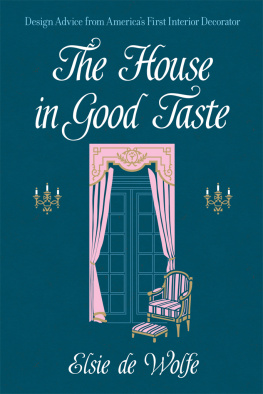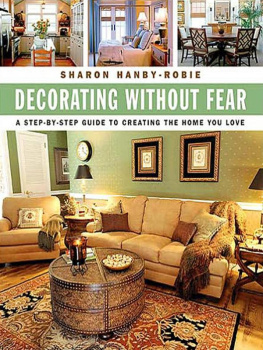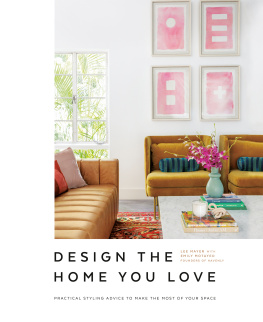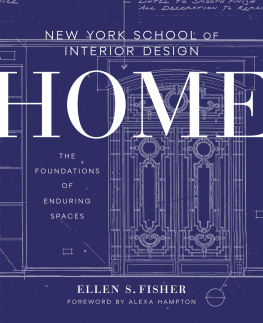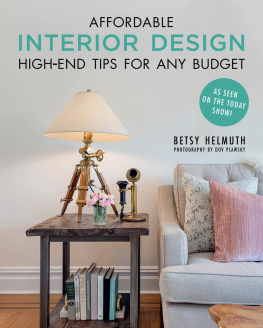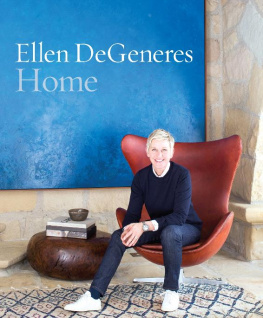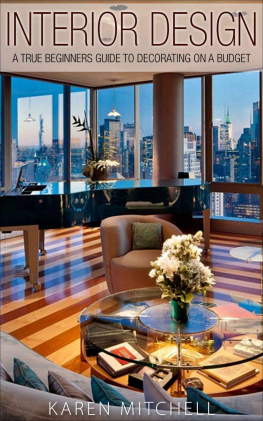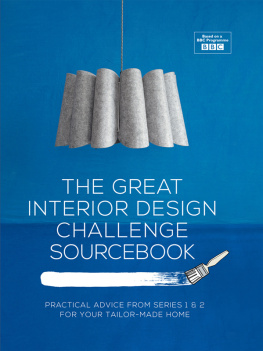The House in good Taste


Bibliographical Note
This Dover edition, first published in 2017, is an unabridged republication of the work originally published as The House in Good Taste: Illustrated with Photographs in Color and Black and White by The Century Co., New York, in 1913. Four photos, originally printed in color, have been reproduced in black and white for this edition.
Library of Congress Cataloging-in-Publication Data
Names: De Wolfe, Elsie, 1865-1950, author.
Title: The house in good taste : design advice from Americas first interior decorator / Elsie de Wolfe.
Description: Mineola, New York : Dover Publications, Inc., 2017. | This Dover edition, first published in 2017, is an unabridged republication of the work originally published as The House in Good Taste: Illustrated with Photographs in Color and Black and White by The Century Co., New York, in 1913.
Identifiers: LCCN 2017018939 | ISBN 9780486819273 | ISBN 0486819272
Subjects: LCSH: Interior decoration.
Classification: LCC NK2115 .D6 2017 | DDC 747dc23
LC record available at https://lccn.loc.gov/2017018939
Manufactured in the United States by LSC Communications
81927201 2017
www.doverpublications.com
CONTENTS
LIST OF ILLUSTRATIONS
The House in Good Taste
THE HOUSE IN GOOD TASTE
I
THE DEVELOPMENT OF THE MODERN HOUSE
I KNOW of nothing more significant than the awakening of men and women throughout our country to the desire to improve their houses. Call it what you willawakening, development, American Renaissanceit is a most startling and promising condition of affairs.
It is no longer possible, even to people of only faintly sthetic tastes, to buy chairs merely to sit upon or a clock merely that it should tell the time. Home-makers are determined to have their houses, outside and in, correct according to the best standards. What do we mean by the best standards? Certainly not those of the useless, overcharged house of the average American millionaire, who builds and furnishes his home with a hopeless disregard of tradition. We must accept the standards that the artists and the architects accept, the standards that have come to us from those exceedingly rational people, our ancestors.
Our ancestors built for stability and use, and so their simple houses were excellent examples of architecture. Their spacious, uncrowded interiors were usually beautiful. Houses and furniture fulfilled their uses, and if an object fulfils its mission the chances are that it is beautiful.
It is all very well to plan our ideal house or apartment, our individual castle in Spain, but it is nt necessary to live among intolerable furnishings just because we cannot realize our castle. There never was a house so bad that it could nt be made over into something worth while. We shall all be very much happier when we learn to transform the things we have into a semblance of our ideal.
How, then, may we go about accomplishing our ideal?
By letting it go!
By forgetting this vaguely pleasing dream, this evidence of our smug vanity, and making ourselves ready for a new ideal.
By considering the body of material from which it is good sense to choose when we have a house to decorate.
By studying the development of the modern house, its romantic tradition and architectural history.
By taking upon ourselves the duty of self-taught lessons of sincerity and common sense, and suitability.
By learning what is meant by color and form and line, harmony and contrast and proportion.
When we are on familiar terms with our tools, and feel our vague ideas clearing into definite inspiration, then we are ready to talk about ideals. We are fit to approach the full art of home-making.
We take it for granted that every woman is interested in housesthat she either has a house in course of construction, or dreams of having one, or has had a house long enough wrong to wish it right. And we take it for granted that this American home is always the womans home: a man may build and decorate a beautiful house, but it remains for a woman to make a home of it for him. It is the personality of the mistress that the home expresses. Men are forever guests in our homes, no matter how much happiness they may find there.
You will express yourself in your house, whether you want to or not, so you must make up your mind to a long preparatory discipline. You may have only one house to furnish in your life-time, possibly, so be careful and go warily. Therefore, you must select for your architect a man who is nt too determined to have his way. It is a fearful mistake to leave the entire planning of your home to a man whose social experience may be limited, for instance, for he can impose on you his conception of your tastes with a damning permanency and emphasis. I once heard a certain Boston architect say that he taught his clients to be ladies and gentlemen. He could nt, you know. All he could do is to set the front door so that it would reprove them if they were nt !
Who does not know, for instance, those mistaken people whose houses represent their own or their architects hasty visits to the fine old chteaux of the Loire, or the palaces of Versailles, or the fine old houses of England, or the gracious villas of Italy? We must avoid such aspiring architects, and visualize our homes not as so many specially designated rooms and convenient closets, but as individual expressions of ourselves, of the future we plan, of our dreams for our children. The ideal house is the house that has been long planned for, long awaited.
Fortunately for us, our best architects are so very good that we are better than safe if we take our problems to them. These men associate with themselves the hundred young architects who are eager to prove themselves on small houses. The idea that it is economical to be your own architect and trust your house to a building contractor is a mistaken, and most expensive, one. The surer you are of your architects common sense and professional ability, the surer you may be that your house will be economically efficient. He will not only plan a house that will meet the needs of your family, but he will give you inspiration for its interior. He will concern himself with the moldings, the light-openings, the door-handles and hinges, the unconsidered things that make or mar your house. Select for your architect a man youd like for a friend. Perhaps he will be, before the house comes true. If you are both sincere, if you both purpose to have the best thing you can afford, the house will express the genius and character of your architect and the personality and character of yourself, as a great painting suggests both painter and sitter. The hard won triumph of a well-built house means many compromises, but the ultimate satisfaction is worth everything.

IN THIS HALL, SIMPLICITY, SUITABILITY AND PROPORTION ARE OBSERVED
I do not purpose, in this book, to go into the historic traditions of architecture and decorationthere are so many excellent books it were absurd to review thembut I do wish to trace briefly the development of the modern house, the womans house, to show you that all that is intimate and charming in the home as we know it has come through the unmeasured influence of women. Man conceived the great house with its parade rooms, its
Next page
